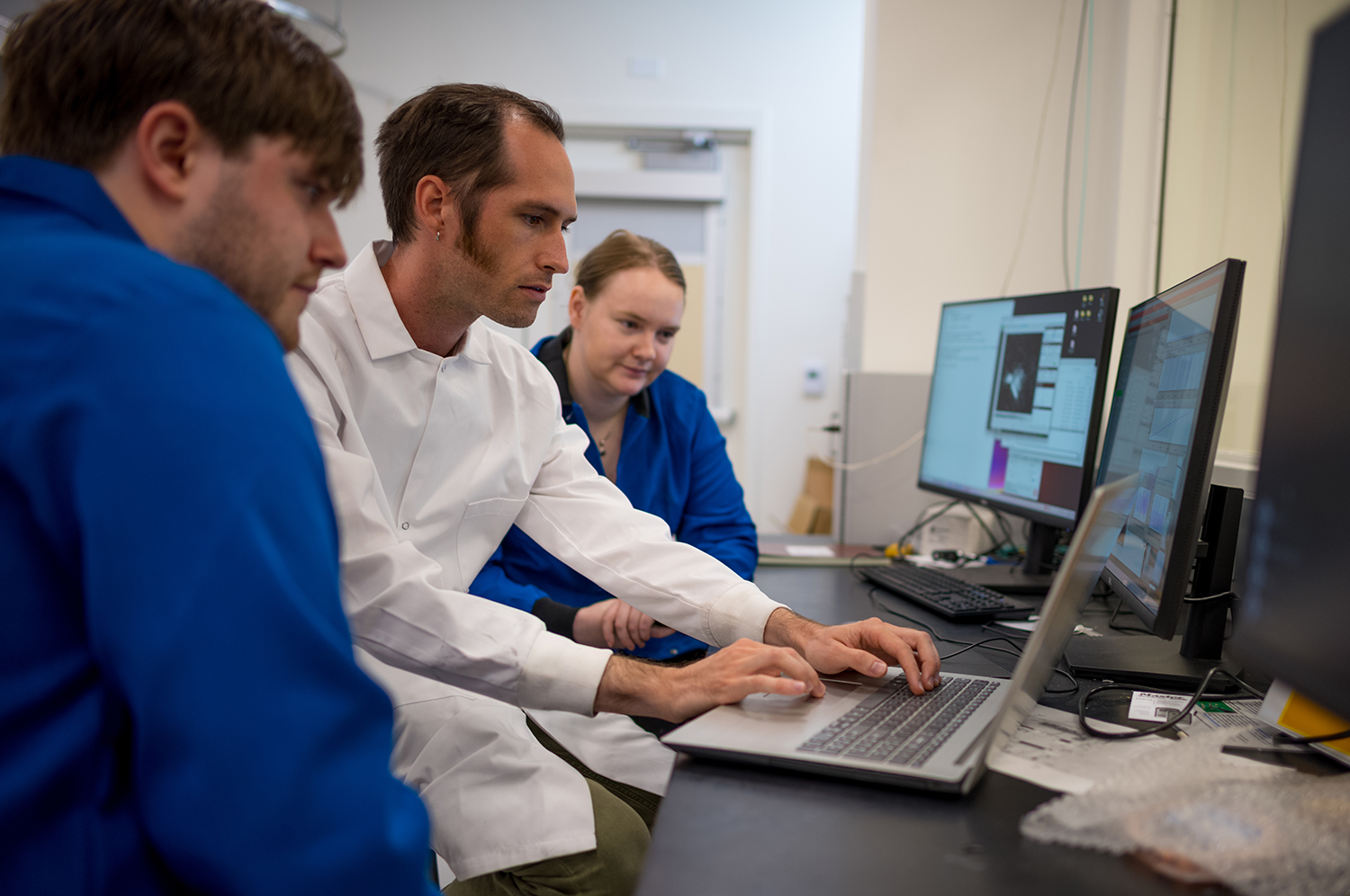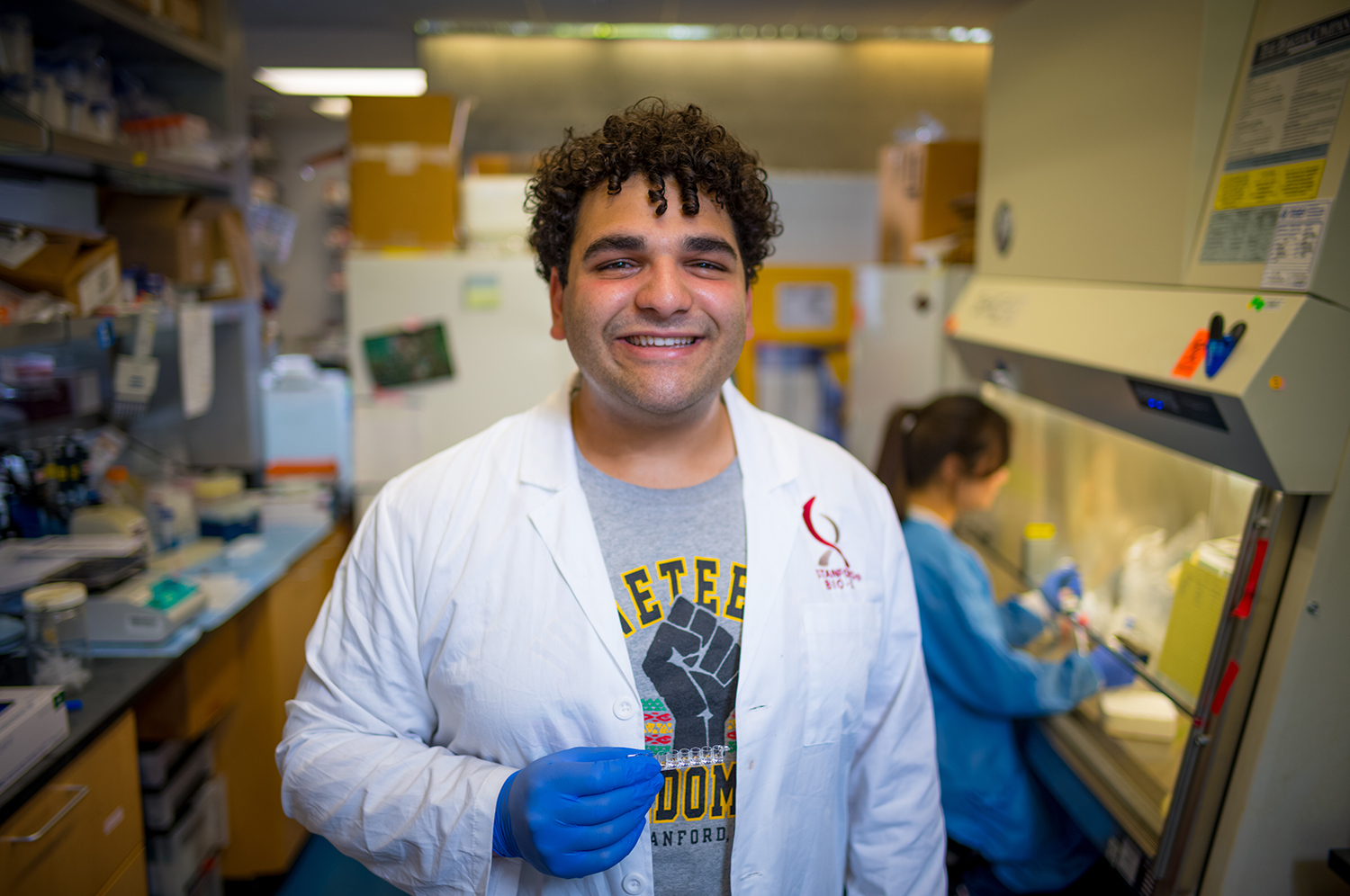Student research is at the core of Stanford’s mission and culture. Every summer, undergraduates from many disciplines work as research assistants in departments and research centers across campus. For eight to 10 weeks, these students join a mentor and work on a project full-time, giving them the opportunity to dive deep without having to balance their research with taking academic classes.
Drive and passion led undergraduates Isabel Cai, Remington Graham, Nicholas Neoman, and Selena Niemi to pursue research in summer 2024 – and their experiences gave them the skills and motivation they need to pursue their future education and careers.
With great power comes great competition
A major focus for many political science researchers is great power competition – a foreign policy concept exploring how powerful nations compete for political influence around the world. One of those researchers is Isabel Cai, a senior and research assistant at the Freeman Spogli Institute for International Studies.
Cai, a double major in political science and East Asian studies, is working with Michael McFaul, a Stanford political scientist and former U.S. ambassador to Russia, on his book regarding the United States’ great power competition with China and Russia today. Cai works alongside other research assistants to contribute content and make structural edits to McFaul’s evolving manuscript. She said McFaul encouraged them to contribute as editors, which gave them a sense of ownership over the work.
“One thing with international relations is that something is always happening, right? And we have to reflect that in the book,” Cai said. “It’s always an ongoing process of writing, receiving new information, and going back to rewrite things.”
Cai has lived and traveled around the world, which sparked her interest in international relations. She grew up across Asia and attended boarding schools in the United Kingdom and Massachusetts. In winter quarter 2023, she took McFaul’s class about relations between the U.S., China, and Russia in terms of power, ideology, conception of the global order, and she was inspired to learn more.
“I’ve been a research assistant for many different professors, figuring out what specific areas of international relations I’m interested in,” Cai said. “I think what’s so special about this book project is that it’s very, very expansive. It’s also more public-facing, wrestling with a big question that involves many parts and might not have a clear-cut answer.”
Cai is currently applying for graduate school, where she intends to continue her research in political science. She said she loves the precision of data-driven work and pointed out that many scholars are using machine learning and causal inference methods to quantitatively test social science hypotheses.
“Most people think political science is just about politics – but it’s actually a very scientific process, which is why it’s called that,” Cai said. “This summer taught me to think more methodically, for instance, in isolating causation from correlation or parsing an actor’s intention from the perceived outcome. It’s not just throwing out an opinion. There’s lots of critical thinking involved.”

From left to right: Materials science PhD student Zane Taylor, engineering physics undergraduate Remington Graham, and applied physics PhD student Sara Irvine conduct analysis of XRD data in the X-ray control room of the Dresselhaus-Marais Lab. | Aaron Kehoe
Sustainable steelmaking
Before coming to Stanford, Remington Graham worked for seven years in a foundry, made pottery, and studied at Long Beach City College. But he wasn’t satisfied.
“I was getting increasingly frustrated with the state of the environment and my inability to do anything about it or to do anything substantive. Yes, I can recycle, but one person recycling isn't quite going to solve the climate crisis and all this terrible stuff that's going on,” Graham said. “I decided to start trying to get an education so that I could do something more substantive to help the state of the environment.”
Graham, who is now studying engineering physics at Stanford, found a place to contribute to climate change research within the Geballe Laboratory for Advanced Materials (GLAM), working closely with the Department of Materials Science & Engineering and the SLAC National Accelerator Laboratory. He’s part of GLAM’s Dresselhaus-Marais Group, an interdisciplinary research team with united goals to improve the sustainability of manufacturing processes.
The group’s current focus is hydrogen reduction for steelmaking, which could replace using coal in this process. Steel is a critical material for construction and transportation – but it’s an industry responsible for 8-10% of global carbon dioxide emissions, meaning that global manufacturing is a significant contributor to the climate crisis
The group runs X-ray diffraction experiments as they process iron, a crucial part of making steel. X-ray diffraction helps researchers understand the crystal phases, composition, and potential impurities of their target material as they process it from iron ore to pure iron.
For his summer research, Graham focused on using Rietveld refinement to process the experimental data. Rietveld refinement programs predict a potential X-ray diffraction pattern based on the data the user inputs regarding phases and compounds, allowing them to test hypotheses about what specific crystal phases may be present in the material – for example, various iron oxide compounds or impurities.
“No one in the group knew how to do Rietveld refinement. It always seemed really intimidating,” Graham said. “I ended up finding a free, open-source software that does this refinement, and I had this joyful time learning the process. I get to experiment, play, and investigate, which lets me learn more about the experiments we do. Learning this new technique lets me get deep into the data and find all the nuances – I’m looking at it all in a new light.”
Beyond this research, Graham’s main goal is to participate meaningfully in the effort for sustainability, whether it’s in research or industry.

Nicholas Neoman in the Sakamoto Lab, holding his microplate strip to test cytokine levels as part of his research on Diamond-Blackfan anemia. | Aaron Kehoe
Equity in medicine
Diamond-Blackfan anemia affects babies in seven out of 1 million live births. Nicholas Neoman, a third-year student double majoring in chemistry and African and African American studies, is studying how to treat it. The disease doesn’t have much national attention, which is a big reason why Neoman was drawn to investigating it.
“My friends and I all said we want to work in a lab that means something to us,” Neoman said. “My whole life has really been working with marginalized people, so I wanted to do the same in my research.”
This summer, Neoman joined the Sakamoto Lab, where he was mentored by Dr. Y. Lucy Liu, through the Stanford Bio-X Undergraduate Summer Research Program. The lab focuses on inflammatory cytokines: small proteins associated with cell signals in virtually every system in the body. Inherited bone marrow failure syndromes like Diamond-Blackfan anemia (DBA) are correlated with these inflammatory cytokines.
Inhibiting select cytokines can alleviate the anemia, but it’s not safe to inhibit them in the whole body – it can cause infection or a weakened immune system. Neoman’s biggest breakthrough was analyzing the blood and pathology of DBA mice to demonstrate that a specific inflammatory cytokine, interleukin-6, was likely linked to DBA.
Neoman’s research is continuing beyond the summer: He will work with the lab through either his undergraduate graduation in 2026 or his potential coterm graduation in 2027. He’s currently working on building the first-ever model of the disease in mice, and he plans to spend summer 2025 targeting specific cytokines with designed medication.
Neoman’s research experience and dual majors are setting him on the path to making a difference in medicine. Growing up in a family of Egyptian immigrants, Neoman recognized the disparities for Black people in health care through the experiences of his Black peers. Before coming to Stanford, he knew he wanted to pursue African and African American studies to better understand the history and culture of Black Americans and the impacts of racism.
“I’ve always thought that the first thing that racism should be removed from is medicine.,” he said. “If I’m not able to make health care equitable for everybody, then I’m not doing anybody a service.”
Chemistry, on the other hand, was a choice Neoman made during his first year at Stanford. He said chemistry is always a fun, challenging puzzle – engaging because everything can be boiled down to chemistry.
“I became infatuated with chemistry because it’s extremely fascinating and foundational to the natural world,” he said. “I like the idea that it’s always going to be stimulating; every day has a new challenge for me to tackle.”

Human biology major Selena Niemi (right) holds a mannequin head fitted with a partially assembled mobile optical neuroimaging device (fNIRS) cap, fellow research assistant Howard Fung (middle) wears an fNIRS cap, and their mentor, Cassondra Eng (left), holds a virtual reality (VR) headset. | Aaron Kehoe
VR for ADHD understanding
Playing virtual reality video games and listening to Lady Gaga sound like things students do in their free time – but they’re part of the research that junior human biology major Selena Niemi conducts in the VR Neurofit Lab with Bio-X.
Niemi’s summer research involved studying how VR games with cognitive and physical components impact executive functioning – a set of skills that help people plan and meet goals – for students diagnosed with ADHD or experiencing attention difficulties.
Niemi was interested in research from her first year and applied through Bio-X to work in the Allan Reiss lab with her mentor, postdoctoral scholar Cassondra Eng.
“I always wanted to go to college, but I never thought it was possible to go to a university like Stanford,” said Niemi, who is a first-generation student. “I’ve always been fascinated by the brain and neuroscience, and I was an athlete in high school. When I found this lab, I wanted to take advantage of having these resources and opportunities to learn in a place that combined my love of neuroscience, my love of exercise, and my interest in the clinical applications of technology.”
This summer, Niemi received an award through the Stanford Bio-X Undergraduate Summer Research Program and joined the VR Neurofit Lab full-time.
The lab is one of the first to integrate portable neuroimaging technology and wireless VR. Niemi and her fellow research assistant Howard Fung from Trinity College recruited participants for the lab’s experiment: measuring brain function using mobile neuroimaging before, during, and after subjects played experimentally modified conditions of the popular exercise-based VR game “Beat Saber.”
Researchers monitored changes in participants’ neural activation in real time while the players moved in the game. The experiment was piloted with students diagnosed with ADHD to ensure broader applicability.
During the experiment, the “Beat Saber” players rhythmically sliced obstacles to a carefully curated set of songs, one of which is by Lady Gaga.
“As you can imagine, I’ve listened to Lady Gaga’s ‘Poker Face’ so many times now,” Niemi said.
Niemi cares deeply about increasing equity, which informs her research. She focuses on understanding whether this exercise-based VR intervention could benefit the cognitive and physical health of under-resourced populations from lower socioeconomic households or those who have experienced early adverse life experiences.
She hopes to keep advancing her commitment to equity in health, and plans to attend medical school in pursuit of becoming a physician.